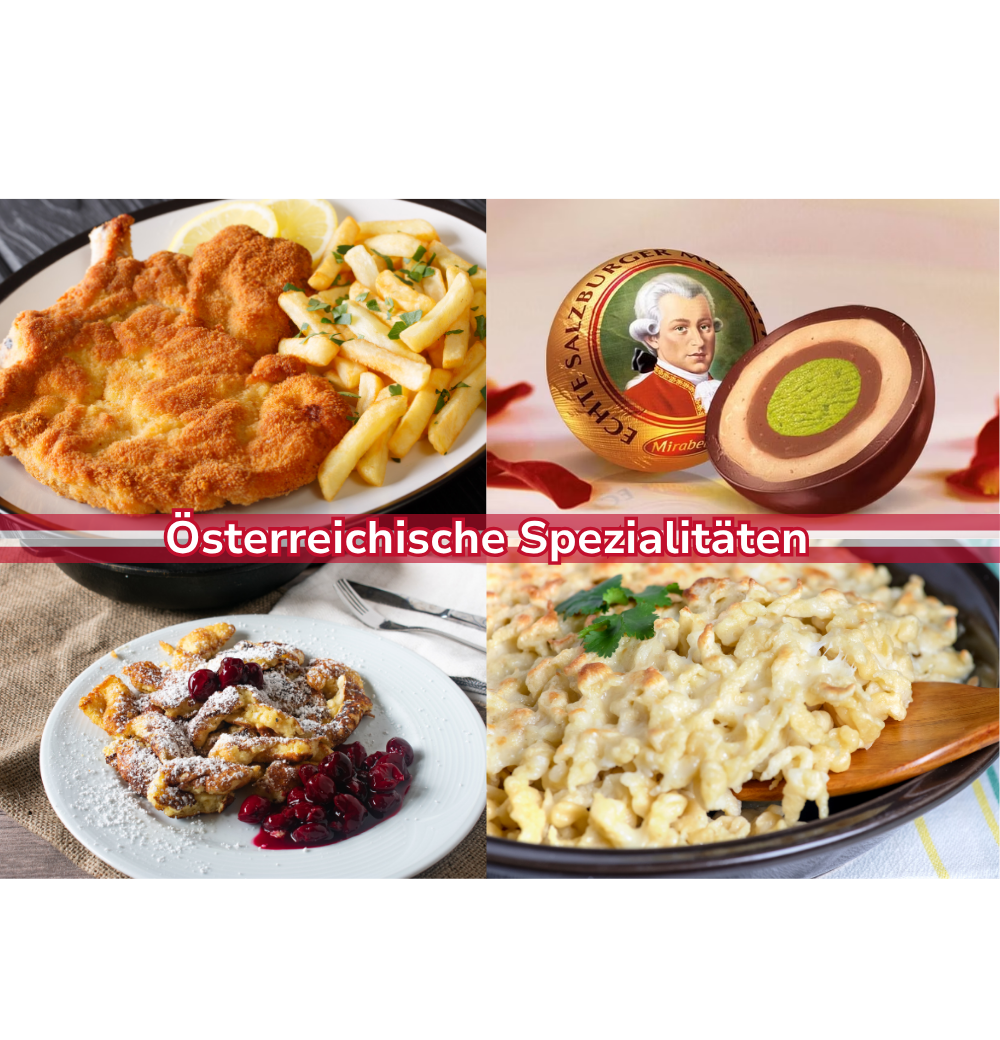Enjoyment from Lake Constance to Lake Neusiedl
Nine federal states, countless traditional dishes: Austrians know a thing or two about great food. While classics such as Wiener Schnitze and Kaiserschmarrn are arguably the best-known specialities, each province also boasts its very own unique delicacies. Here is an overview of the most important ones:
What is typical Austrian food?
There isn’t really a straightforward answer to this question: Because of Austria’s colourful historic past, its cuisine has been significantly influenced by many other nations – from the Czech Republic to Hungary and Croatia. What makes Austrian food great, though, is the incredible variety which offers the perfect treat for every taste. Typical Austrian dishes are usually of the no-nonsense variety and often savoury, but also include numerous soups and desserts. In short: Summarising the entire range of Austrian cuisine in one text wouldn’t quite do it justice. So instead, we’ve decided to take you on a culinary journey through all the federal states. Who knows – maybe you’ll find your new favourite dish along the way?
Vienna: the sweet capital of Austria

When you think of Vienna, you probably first think of a crispy baked Wiener Schnitzel or a juicy Tafelspitz with roasted potatoes and apple horseradish. After all, these classics are known far beyond the city limits. But the real highlight of Viennese cuisine is served afterwards: intricate pastries, which can be enjoyed in countless bakeries and coffee houses across the city. From the world-famous Sachertorte (chocolate cake with apricot filling) to simple classics such as apple strudel or Gugelhupf (a ring cake made from yeast dough) and crispy Topfengolatschen (puff pastry pockets filled with curd cheese and sultanas), Viennese cuisine offers something sweet for every taste.
The perfect accompaniment is, of course, a cup of freshly roasted coffee – which also tastes best in the Austrian capital thanks to its long-standing coffee house tradition.
Lower Austria: diversity on the banks of the Danube
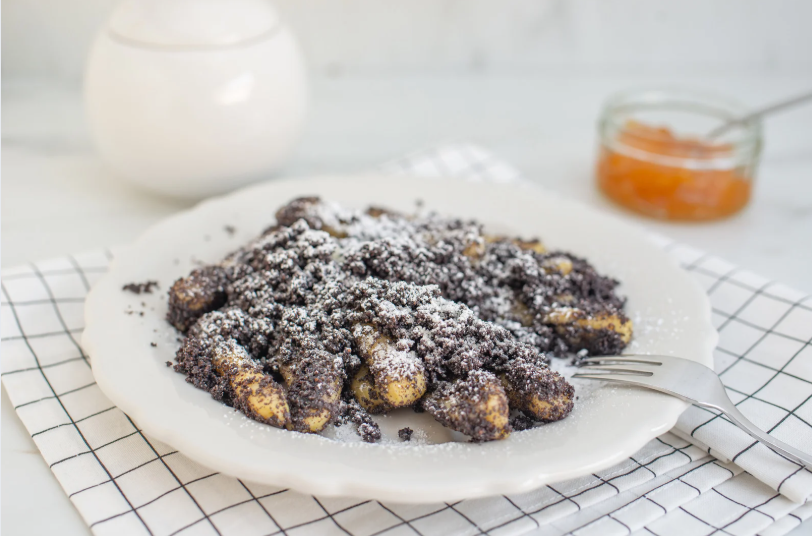
Austria’s largest federal state is defined by agriculture. That’s why you’ll typically find plenty of home-grown, high-quality ingredients used in their regional dishes. Sweet delicacies such as Wachau apricot dumplings or poppy seed noodles with Waldviertel poppy seeds are particularly popular. Thanks to the proximity to the Danube and vast wooded stretches, the menus of Lower Austrian inns and restaurants also include a wide variety of fish and game dishes such as baked carp or tender venison ragout.
When it comes to drinks, viniculture is a huge part of Lower Austrian (agri)culture – typical varieties are Grüner Veltliner and Riesling, which are produced with great care and experience in the numerous wine-growing regions along the Danube. And if your lunch is a little heavy on the stomach, a glass of apricot schnapps is sure to fix that in no time.
Burgenland: Pannonian delights
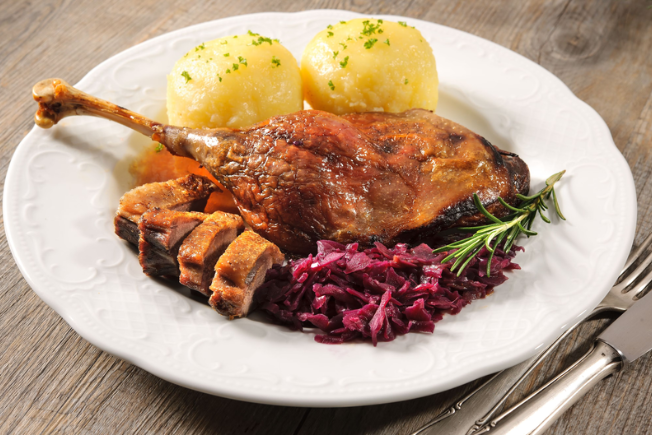
Austria’s easternmost province is strongly influenced by Hungarian cuisine. As a result, there are numerous delicacies on the table that are also available in neighbouring Hungary, such as goulash, cabbage strudel and stuffed peppers. In November, crispy Martinigansl with bread dumplings and red cabbage is traditionally served. Another speciality from the East is Grammelpogatscherl, a spicy yeast dough pastry topped with caraway seeds, which can be enjoyed both on its own as a snack, or in combination with a hearty bean soup as a main course. Classic desserts include Somlauer Nockerl made from rum-soaked sponge cake and Krapferl – biscuits in many different variations baked for weddings and Christmas.
The star, however, is without question the Burgenland wines: from Lake Neusiedl in the north to the “Land of Blaufränkisch” further south, numerous excellent varieties are grown, including Blaufränkisch and Zweigelt. And of course there’s plenty of sparkling white wines to try as well, including Riesling, Grüner Veltliner and Sauvignon Blanc.
Upper Austria: where savoury meets sweet

When it comes to culinary delights, Upper Austria is the clear record holder. The province is home to the oldest cake in the world: the Linzer Torte (Linzer cake) made from fine shortcrust pastry with a sweet and sour filling of redcurrants. But Upper Austria also has plenty to offer on the savoury side, including Mostbratl – a juicy roast pork seasoned with fermented apple or pear juice. Other highlights include Innviertler Surspeck, a savoury, spiced and smoked bacon that goes perfectly with fresh farmhouse bread, or Hascheeknödel, which are traditionally filled with leftover roast or meat. For drinks, try cider or a cool glass of Mühlviertel beer.
| Tip: If all these Austrian terms are making your head spin, you’ll find a list of the most important words and phrases in our blog post on Austrian dialects. And if you want to continue your language learning afterwards, we’ve got plenty of German courses to suit every language level from complete beginner to advanced learner. |
Salzburg: Culinary delights from the city of Mozart
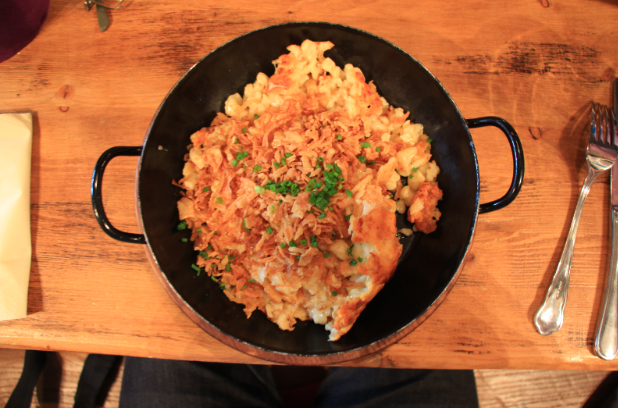
Salzburg is world-famous for its festival, but the state’s cuisine also has a lot to offer. As an alpine region, milk and cheese are the most important specialities there – accordingly, Pinzgauer Kasnockn (fine spaetzle served with regional cheese and spicy onion butter) are one of the must-try dishes. A typical Austrian fast food also hails from Salzburg: Bosna, a specially seasoned sausage served in a roll and garnished with chopped onions, parsley and mustard – just like a hot dog. The best-known dessert arguably are Salzburger Nockerl, a light and airy soufflé made from beaten egg white, sugar and vanilla, which is traditionally served in three pyramid-shaped “Nockerl” (“dumpling”), reminiscent of Salzburg’s three local mountains.
The federal state has been home to numerous first-class breweries for many centuries, so make sure to try the local beer as well. And if you’re looking for something to snack on in between meals, you absolutely need to try the original Salzburg Mozartkugeln.
Styria: tradition meets taste
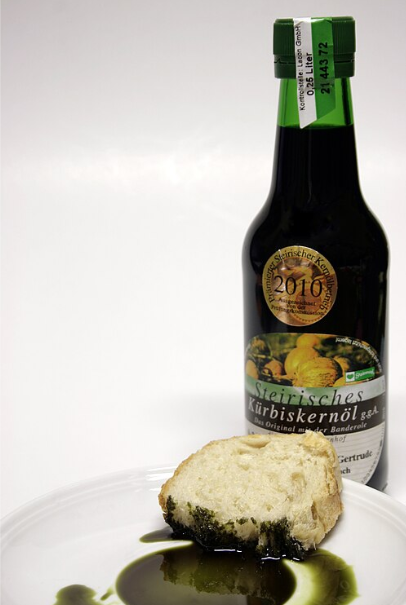
At first glance, Styrian cuisine is all about one thing: pumpkin. An indispensable kitchen essential from Styria is pumpkin seed oil with its nutty, delicate flavour, which is used for seasoning a wide variety of dishes – from classic potato and lamb’s lettuce salad to aromatic pumpkin cream soup and even vanilla ice cream. Typically Styrian dishes also include crispy fried chicken and succulent root meat, which is cooked in a broth with root vegetables and served with freshly grated horseradish.
If you’ve got a sweet tooth, make sure to try the Styrian apple tart and regional apple juice made with fresh fruit from the region. And if you’d prefer something a little stronger, a huge selection of first-class wines from the many wine regions are ideal thirst quenchers – just like Schilcher Sturm, a tangy yet delicate rosé.
Carinthia: Flavours from the south
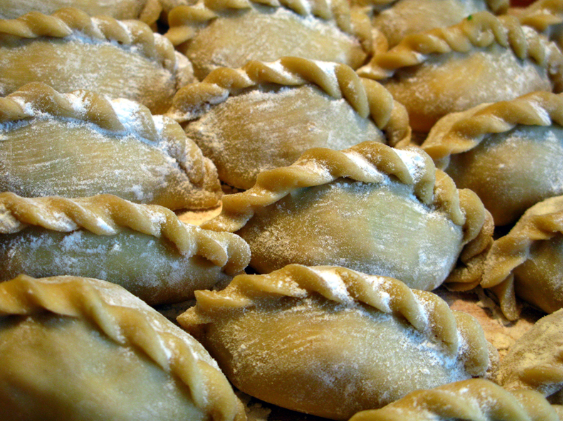
If Carinthian cuisine was characterised by one dish, its without question Carinthian noodles – small pockets of pasta dough filled with savoury or sweet fillings, served with melted butter, sauerkraut or other sides, depending on the recipe. Another well-known classic is the Reindling, a cake made from rolled-up yeast dough filled with cinnamon, sugar and sultanas. It is typically served at Easter or on local public holidays. Thanks to the many lakes, rivers and streams in the south of Austria, fresh fish is also a Carinthian speciality. It can be prepared in a wide variety of ways – from fish soup to grilled or smoked Carinthian Laxn (lake trout).
Beer brewing also has a long-standing tradition in Carinthia, with the province being home to a number of well-known breweries, including Hirter, Villacher Bier and Loncium.
Tyrol: savoury delights from the alps
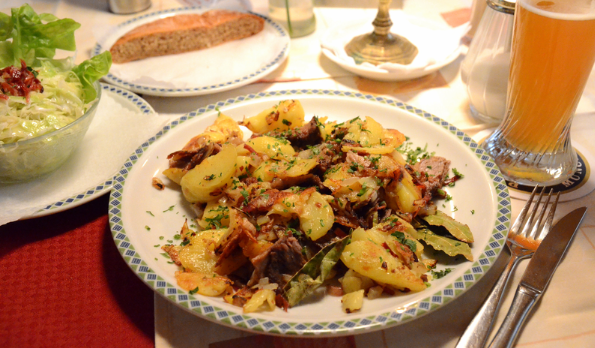
If you have ever been hiking or skiing in Tyrol, there’s a good chance you’ve already experienced your fair share of Tyrolean cuisine. After all, the many hearty, savoury dishes are the perfect way to recharge your batteries after a long day out and about in the mountains. Tiroler Gröstl is the go-to classic – a pan-fried dish made from potatoes, onions and meat, often topped off with a fried egg. Another firm favourite on the menu are Speckknödel (bacon dumplings) made from potato dough, which are typically served in a clear broth or with sauerkraut. And then there’s cheese, of course:
Typical Tyrolean specialities include cheese dumplings in a clear broth and Schlutzkrapfen, Austria’s version of Italian ravioli. And if you prefer something sweet, make sure to order Moosbeernocken – a type of pancake with fresh blueberries.
Vorarlberg: The best from the banks of Lake Constance
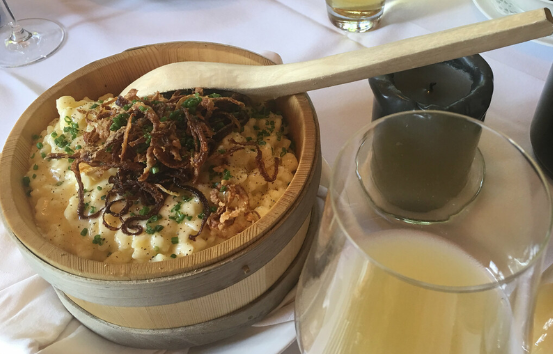
Vorarlberg’s cuisine is heavily influenced by its neighbouring country Switzerland – which is why regional cheese and other dairy products play such an important role in the preparation of traditional dishes. The best-known Vorarlberg dish is Käsknöpfle, which is similar to the Upper Austrian “Kasnockn” (cheese dumplings) and topped with a mix of melted Vorarlberg cheese. The types of cheese used differ from region to region, but mountain cheese and flavoursome “Räßkäse” generally are go-to varieties. Creamy soup or peeled potatoes with cheese are also typically local specialities. But don’t worry, there’s plenty of variety: For example Riebel, a type of semolina porridge that is slowly (up to an hour or more) roasted in a pan with butter or lard by constantly stirring and poking to form small, irregular and sometimes crumbly lumps.
The Riebel is usually served plain with coffee or milk. If you add a little sugar, it becomes a simple dessert that is often enjoyed with extra apple sauce or compote. Other sweet treats from the “Ländle” region are Ofakatz (yeast dough cake with fruit), Scheiterhaufen (a tasty dessert made from stale white bread), Schwozamuas (the Vorarlberg version of Kaiserschmarrn) and Funkaküachle, a lard pastry that is baked in hot fat and garnished with icing sugar. A small glass of pear or cherry schnapps is also a popular choice to aid digestion after a lavish meal.
Whether you prefer sweet or savoury treats, make sure to give yourself plenty of time to sample your way through Austrian’s most classic dishes. From fluffy apricot dumplings from Lower Austria to spicy cheese specialities from Vorarlberg, there is a traditional dish to suit every palate. And if you’d like to find out even more about the life, people and culture in Austria, you’ll find plenty more reading material on our blog – including our guide to the best music festivals in Austria as well as the life and works of some of Austria’s most famous writers. Happy reading!

